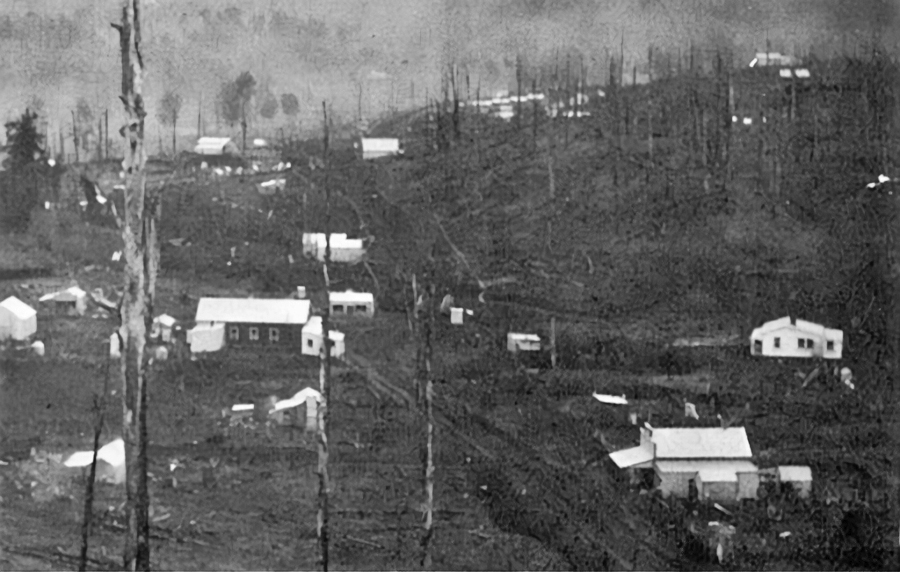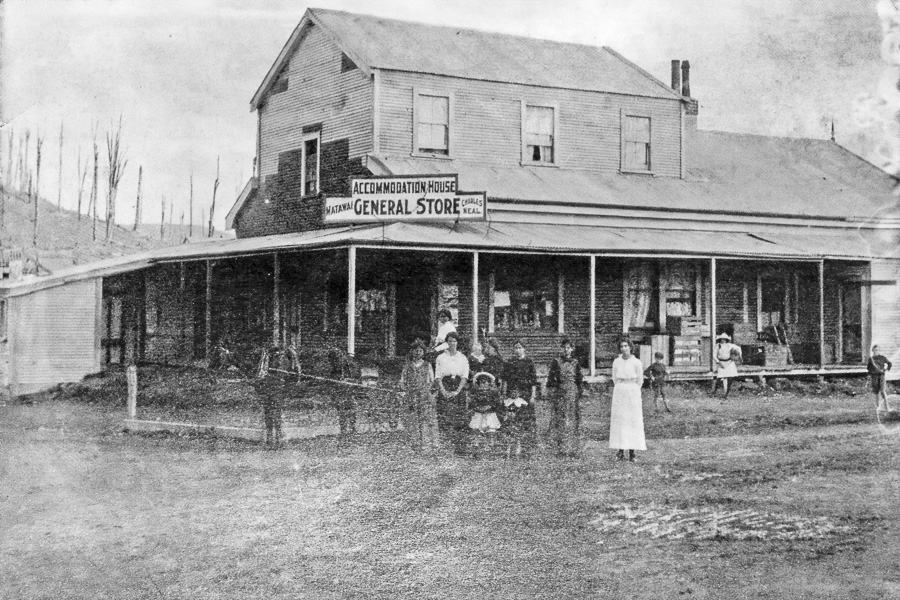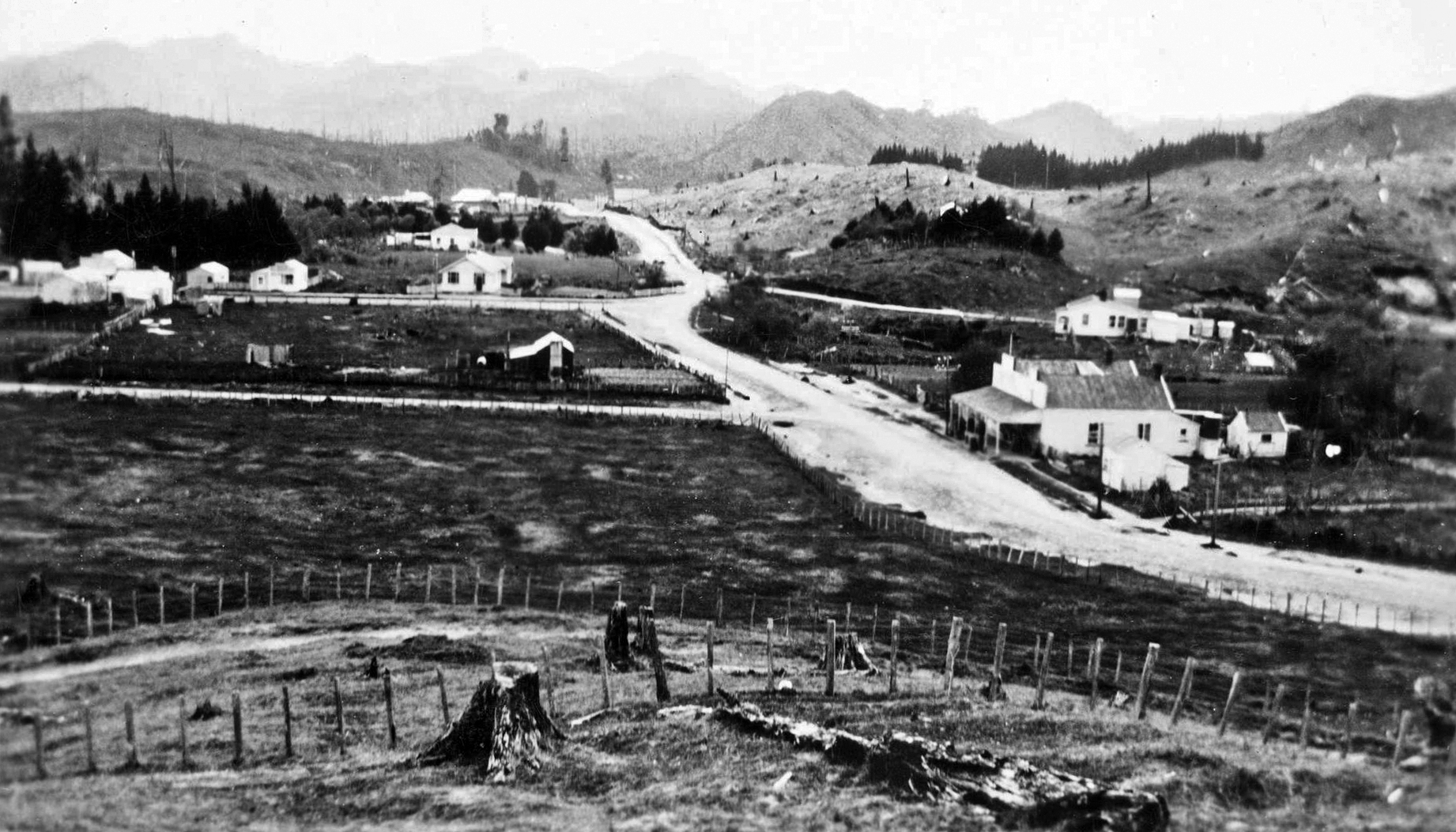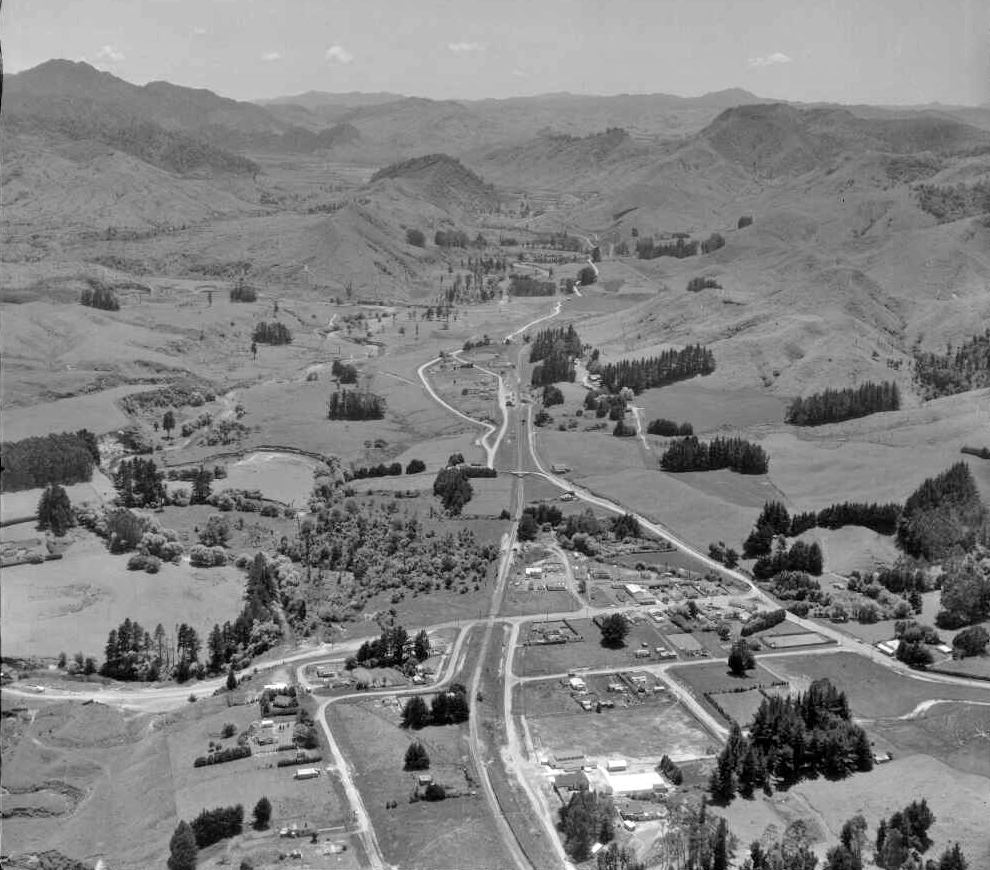 Chris Korte's New Zealand Genealogy Project
Chris Korte's New Zealand Genealogy Project
History of Matawai, Gisborne, New Zealand
Information about Matawai, near Gisborne NZ, and its history. The Korte family were among the first settlers in the district.
|
| « page Index 1 2 3 4 5 . . .17 page » |
History of Matawai
According to the Waitangi Tribunal Report (2004) Ngapotiki of Te Aitanga a Mahaki had customary rights over land in the Matawai, Motu and Raukaroa districts. Land was purchased from the Maori owners between 1873 and 1880, with Colonel Thomas William Porter, the Government Purchasing Officer, completing the purchase of the Motu Block (25,653 ha) and Waikohu Matawai Block (13,993 ha) by 1880. The Government subsequently surveyed the land and made it available for European settlement.
James White was the settler who first selected the land where Matawai township is located, leasing 1000 acres from the Government in 1895. By 1904 he had cleared sufficient land to graze 1400 sheep and in 1905 the property was sold to Arthur Mortleman, with his brother-in-law Robert James Fleming managing it.
Matawai had its beginnings soon after 1900 as the district was settled, the bush was cleared and farms established. Matawai did not warrant an entry in the 1905 New Zealand Post Office Directory, with residents being listed under the Rakauroa entry. A post office was opened at Matawai on 12 January 1907, with Mr R J Fleming the postmaster. On 29 September 1908 the Motu Valley Settlers' Association was formed in Matawai with the following members: C Buscke, H Bulst, J Johnstone, H Korte, J J Marshall, J E Haisman, W Baird, J Bryant, C Simpson, J Pigott, M Doyle and H Riddick. Matawai School opened in 1908 and the Matawai Public Hall in 1910.
Charles Neal opened a boarding house and store in 1908, where the previous Matawai Hotel currently stands. The postal service was then provided from the store. Arthur John Hustler opened a second store soon afterwards. Both buildings can be seen in the 1913 photo of Matawai (below). The 1910 Post Office Directory lists 25 farmers and settlers in Matawai, and 24 contractors who were clearing bush in the district.
The township of Matawai came into existence in 1912 as the railway from Gisborne to Motu was being constructed. The route of the railway and land for the Matawai railway station had been selected. Sections for the Matawai township were surveyed and made available for sale in 1912. The Poverty Bay Herald reported the planned auction of sections at Barlow's Garage in Gisborne (see below). The subdivision was 58 acres with sections ranging from a quarter to nine acres in area. Over a hundred sections were sold in the auction on 22 June 1912. A further 32 sections adjoining the railway station were sold by Hensen and Green on 12 July 1912.

21 June 1912, Page 5.
LAND SALE
To-morrow, at 1 p.m., Messrs Williams and Kettle, Ltd., offer for sale at Barlow's garage, on behalf of Mrs E. A. Mortleman, sections in the township of Matawai. These sections offer special inducement to investors and others by reason of the fact that Matawai must in the near future be a prosperous and flourishing township. Apart from certain railway advantages likely to accrue to this township on account of its position, there are the vast timber forests in the locality, which are now being actively milled; the timber from which, must come to Matawai as its outlet. For dairying purposes the land in the neighborhood is unsurpassed, and there is no doubt that this will soon be one of the flourishing industries.
The road from Matawai to Gisborne, via Rakauroa and Te Karaka (now State Highway 2), was in relatively poor condition due to a shortage of road metal. The poor state of roads made the railway important for transport of people and goods. The railway reached Matawai in 1913.
In January 1913 the township was starting to develop. Four railway cottages had been built and excavation of the railway yard was completed. Matawai was on the fringe of the remaining timber country and sawmills were operating (F, Halls, Drummond Brothers, Sloan Brothers) or preparing to open (McLeod Brother). A further three mills were planned. It was estimated that 25,000 feet of timber per day would be produced from the first four mills (approx 60 cubic meters of sawn timber per day). The township had two stores and a number of scattered buildings. The site for a new schoolhouse had been excavated in readiness for building. The Settlers' Saleyard Company had secured a site for their stock yards adjoining the railway station. A site was offered for a new Post Office. By June 1913 it was reported that there were six general stores in Matawai and another being erected.
The Matawai community was diverse by 1926, dominated by farmers, but a range of occupations listed in the Post Office Directory: blacksmith, boot maker, butchers, carpenter, carrier, clerk, contractor, district nurse, gardener, labourers, lorry driver, mail contractor, postmaster, railway gangers, railway station manager, road men, saddler, stationer and store owners.
The 1930's saw further development of Matawai when the Waioeka Gorge road to Opotiki opened, allowing motorists and service cars to use the route through Matawai instead of the earlier route from Gisborne to Opotiki through Motu. In 1934 the police station, previously located at Motu, was established at Matawai. A constable has been based in Matawai since then. In June 1934 the Matawai Hotel opened for business, the licence and building having been moved from Motu. Rupert Bilham and Robert Beil had established a garage in Matawai by 1938 on the site of the present petrol station. In the 1950's petrol was also available from Hustlers 4 Square store and the current PGG Wrightson store.
Electricity arrived in Matawai township in 1952. However it was not until 1962 that the district around Matawai was reticulated (Motu, Homebrooke, Te Wera).
Early dairy farmers in the district supplied cream to the Motu dairy factory that had opened in 1903. Dairy farming became more established in the Matawai district once the railway began operating, with cream being transported to the Kia Ora butter factory at Makaraka near Gisborne by rail. Dairy farmers used a separator to separate cream from the whole milk, with the cream sent to the butter factory in 5 and 10 gallon cream cans. The skim milk was fed to pigs, providing another source of income. In 1926 eight dairy farms were listed in the Post Office Directory for Matawai. Following the closure of the railway in 1958 dairy farming ceased in the district. Dairy farming made a return to the district in 2009 with whole milk being transported by road out of the district for processing.
Sheep and beef cattle farming became the main type of agriculture in the Matawai district. The volcanic soils of the district require regular application of fertilisers to maintain pasture and livestock production. Numerous airstrips were established in the district during 1950-1960 for aerial application of fertilisers. The district also has deer and goat farms.
In recent years the population of the district has declined due to farms being amalgamated to obtain economies of scale and introduction of labour saving technologies on farms, completion of state highway improvements, plus families having fewer children than common from 1900-1960. For example the Matawai School had 200 students and 5 teachers in 1958, compared with 50 students and 3 composite classes in 2024.

Matawai in 1913.
The building bottom right was Hustler's Store for many years, built in 1908 for Arthur John Hustler. Neal's Boarding House is further along the road on the left, on the site of the previous Matawai Hotel.
Source: Gisborne Photo News

Neal's Matawai Store 1915.
Charles Neal's Boarding House and General Store, 1915, showing the top level newly added. The building was destroyed by fire in November 1922 and subsequently replaced by the Matawai Hotel in 1934.
Source: Standing Sentinel, Collected memories from 100 years of Matawai School, 2008.

Matawai about 1930.
The building beside the road (right) was Hustler's Store, and the Post Office is the white building on the far side of road at the corner intersection.
Source: Tairawhiti Museum.

Matawai in 1958.
The hotel is in the lower left corner, and the school center.
Source: Matawai School Golden Jubilee 1908-1958.

Matawai 3 Dec 1955, looking towards Motu.
The railway line (center) passes the school (bottom right), crosses the Opotiki Road, goes under the over bridge on the Motu Road, enters Matawai Station, then continues down the Motu Valley. The Opotiki Road (SH2) on bottom left.
Source: Whites Aviation Ltd: Photographs. Ref: WA-40004-F. Alexander Turnbull Library, Wellington, New Zealand.
Page Updated 22 Jan 2024
| Owner of original | Chris Korte |
| File name | histories/./folio/placesMatawai/02 History.html |
| File Size | 10.41 KB |
| Media ID | 10262 |
| Dimensions | n/a |
| Folio version | v13.0.0.37 (B241124-155513) |
| Linked to | Althea Grace Elizabeth MORTLEMAN; Herman BULST; Felix Herbert BUSCKE; Heinrich Friederich Johann KORTE; Christopher John KORTE; Arthur Edward MORTLEMAN; Elizabeth Ann FLEMING; Elizabeth Mary REDPATH; George REDPATH |
| Back to top « page page » |








